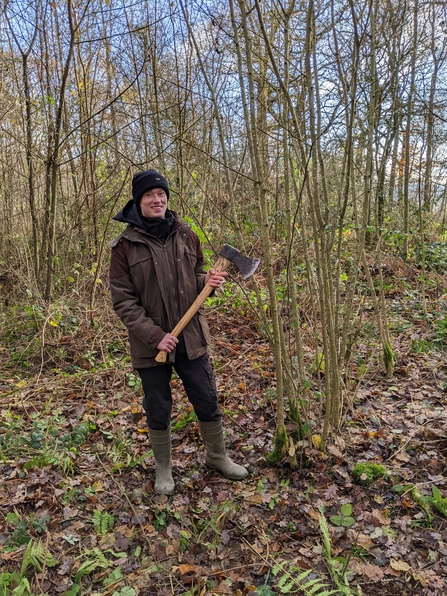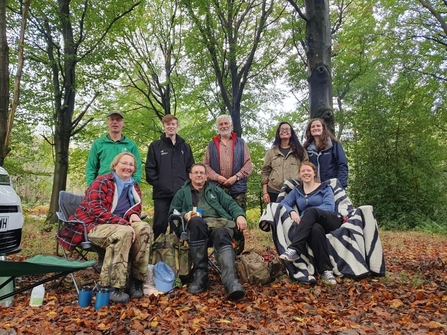With the changing of the seasons, my work has moved on from nest boxes to learning all about woodland management. In the latest chapter on my traineeship, I undertook my chainsaw training and the dreaded assessment - trust me when I tell you, whilst it was exciting to gain these skills, it was also very stressful! It wasn’t worth the stress, though, as the trainee team and I passed without any issues and we’re having a blast taking our learning further and practicing our new skills.
For now, I’d like to take some time to talk about a brilliant coppicing workshop I recently attended in Shropshire. Coppice coupes are quite abundant in our nature reserves in Worcestershire, so learning the ins-and-outs of coppicing was very valuable.
The workshop took me and fellow trainee Anna to Edge Wood, adjacent to Horton Hollow nature reserve. Edge Wood is part of an 18-mile-long stretch of connected woodland, which is the longest stretch in the country! It was an incredibly cold morning but thankfully our leader Richard had already set up camp, with stools, a campfire and most importantly, tea and biscuits!
We started by walking around the woodland, identifying the coppice coupes. The species being coppiced was hazel, on an eight-to-10-year rotation. Depending on the age, hazel can produce a range of products but at this age hazel generally produces a ‘rod’ that can be used for weaving hurdles and bean poles. Honestly, I’m surprised that I’m recalling this information as, at the time, I was rather distracted by the sheer beauty of the woodland!



